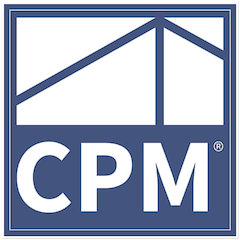Real Estate Investment Analysis
Discounted Cash Flow Analysis and Internal rate of Return Basic Concepts

The main purpose to invest in real estate is to obtain a good return on investment with limited well defined and measured risk. Capital follows the highest return adjusted for risk and real estate is a vehicle to obtain good returns consisting of current income and future appreciation.
In the process of purchasing an investment property, an investor must take into account several factors when analyzing the investment. Property condition, location, potential for future appreciation, current income, potential income, highest and best use, capital expenditures over holding period and capital investments required to achieve the maximum return. One essential aspect is to determine how much to pay for the investment, what is the value at time of acquisition given the investment criteria.
One method of determining the value of an investment property is the Discounted Cash Flow Analysis (DCF). Discounted cash flow (DCF) is a
valuation method used to estimate the value of an investment based on its expected future cash flows. DCF analysis attempts to figure out the value of an investment today, based on projections of how much money it will generate in the future, as current yearly net income and appreciation of the asset over time. The DCF It tells you how much money you can spend on the investment right now in order to get the desired return in the future.
The Discounted Cash Flow analysis operates under the time value of money principle. This concept assumes that money is worth more today than it is in the future. For example, $100 is worth more now than it would be a year from now because of interest and inflation rates. If you’re going to spend $100 dollars to buy something, you’re going to want to know how much money you’ll get in return and what that money will be worth in the future. And that’s where the Discounted Cash Flow method can help.
The elements of the DCF are:
Period of time. This is also referred to as the holding period based on the investment criteria and goals of the investor.- The projected cash flow that will occur every year. This is based on current leases and rental agreements and operating expenses as well as capital expenses required over the holding period.
- A discount rate or annual rate. The discount rate could be thought of as how much money you’d earn if you invested it in another account with equal risk. For example if one can obtain 5% return in an investment with zero risk then will require a higher rate of return for an income property and even higher for stocks or bonds.
- The estimated future value of the investment (the property in this case) based on future forecasted stream of income, appreciation, inflation rates and specific changes in uses or conversions that will increase the future value of the property.
The DCF analysis will tell you what would be the maximum price you can pay for a property based on your investment criteria.
Another way to analyze investments is the Internal Rate of Return (IRR) which is a similar financial formula that takes into account the Total Acquisition Cost (asking or negotiated price for a property plus closing costs and other acquisition costs), the Yearly Stream of Net Operating Income based on lease agreements and operating and capital expenses (both actual, forecasted and estimated) and the estimated Future Value at the end of the holding period. When you incorporate these variables into the financial formula you obtain the Internal Rate of Return which is basically the annualized rate of return of the investment over the holding period. Then you can compare this IRR with your investment criteria and determine if the investment is attractive or not for you. On the other hand if you input a desired IRR to meet your investment criteria then you can determine the maximum price to pay for the property.
It is imperative to analyze in detail the real estate investment during the due diligence period of the acquisition to be able to determine acquisition costs, expected rate of the return and the right value to meet the investor’s criteria and therefore price to pay.
These analysis can be done before or after tax as better fits the investor's needs
This is just a brief description of the DCF and IRR analysis, for a complete explanation and to obtain consulting services to acquire investment real estate please contact us at office@properties.rent
Article by Gaston Reboredo CCIM CPM
Share this post













